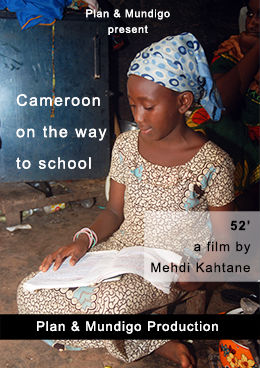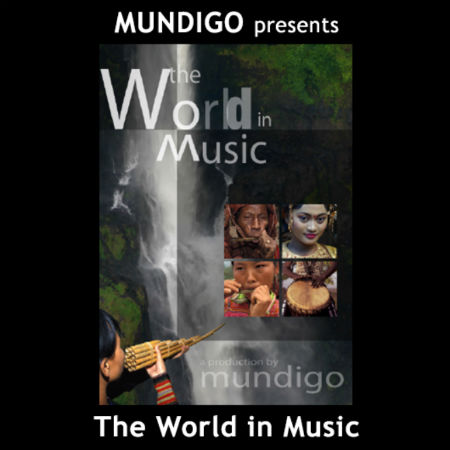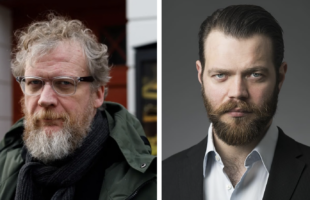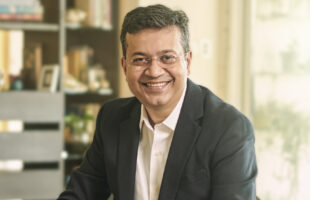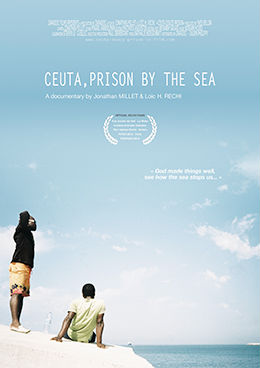
WHAT’S NEW – UNITARIES

CURRENT AFFAIRS – FROM J.MILLET & LOÏC H.RECHI – HD 16/9 52′ & 90′ – FR/EN
Ceuta, Prison by the Sea tells the paths of five migrants in the Spanish enclave of Ceuta, Northern Morocco. They have left everything they had to try their luck into Europe only to find themselves locked up in an open sky prison, at the gates of Europe. They cope with both the hope of obtaining a pass and the fear of being deported to their countries.
In this film we mean to tell the story of migration, to tell about the invisible North-South frontier and about through other eyes, those of the migrants who are blocked at its doors and fantasise about a Europe they have never seen. For weeks, we walked in the steps of our characters to share and feel what their daily life, their doubts and hopes were, to understand the dream of Europe as perceived through their eyes, through strictly human stakes.
Our point was to plunge the onlooker into this sweet prison, along with Iqbal, Marius, Simon and Nur, immerging him subjectively without ever stopping, with no voice-over or added commentary.

DISCOVERY – TRAVEL – FROM DOMINIQUE LEROY – HD 16/9 52′ –FR/EN
Indians worship their many gods (several million), practice devotions and offerings, organize huge religious festivals dedicated to Vishnu, Ganesh, Kali. Religion is seen as being at the service of man in his relentless pursuit of happiness. Spirituality remains the core of everyday life, with its rituals, customs and festivals.
Harmony, asceticism, renunciation, wisdom are not empty words and are an alternative to the materialistic and rational thinking of Westerners.
Various galleries of traditional portraits on everyday or festive occasions will be dealt with. We’ll meet this secret India, from its forgotten kingdoms to its spice counters.
CAMEROON ON THE WAY TO SCHOOL
CURRENT AFFAIRS – JUSTICE – FROM MEHDI KAHTANE – HD 16/9 52′ – FR/EN
More than 66 million school-age girls do not attend primary or secondary school worldwide.
Every child shall have the right to an education. This is what the African Charter on the Rights and Welfare of the Child, which Cameroon ratified in 1997, states in Article 11. Yet the reality is quite different: in Cameroon, 1 out of 10 children does not attend school.
The situation is even worse in the Briqueterie, a disadvantaged district of Yaoundé, the capital city, where 52% of children do not attend school.
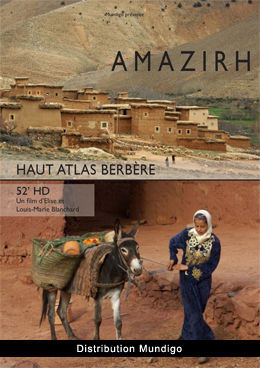
DISCOVERY – TRAVEL – FROM ELISE & LOUIS-MARIE BLANCHARDHD 16/9 52′ – FR/EN
At walking or mule’s step pace, Louis-Marie and Elise Blanchard lead us to the discovery of a deep beautiful and secluded valley of the Moroccan High Atlas that still eludes the general standardisation.
WHAT’S NEW – SERIES
Occupation: Animal musicologist
World – 2014
If there is an unknown occupation to the general public it is that of “animal musicologist”. An animal musicologist is interested in the relationship that animals have with music. At the moment, there is no certified recognition for this specialty, but the Ministry of National Education and Ecology are thinking of changing that.
Using humour, the ethnomusicologist Patrick Kersalé, invites future students of this “unlikely academic curriculum” to weight up their abilities and then perhaps also balance their hopes!
Musical Mysteries of Angkor
Cambodia – 2013
From India to Bali via Nepal and historical Indochina, Patrick Kersalé spent fifteen years following the routes of the expansion of Hinduism and Buddhism, tracking every living record of material and immaterial traces of Angkor Wat outside of its walls, including musical instruments and religious practices. His research has also led to an interest in animistic and shamanistic beliefs in the regions.
With two new films he has given us the benefit of his astonishing discoveries, including an approach to the world of sound from the Khmer city.
Funeral Songs and Dances of the Toraja
Indonesia – 2011
The Toraja live on the island of Sulawesi in Indonesia. Funerals for nobility spell excess: more than three thousand guests for a full week, hundreds of sacrificed animals, large circles of singers-dancers who compete with each other. With these lavish and extravagant rituals, the deceased walks the road to ancestry. In return, those living will be protected by the ancestors.
Dana Rappoport, an ethnomusicologist at the CNRS since 1991, has studied the music of the Toraja people. She sheds a new light on the role of funeral songs and dances and on the changes taking place in recent decades, particularly because of Christianity.
Mysteries of the Sacred Dances of Tibet
2014
What the West calls “the sacred dances of Tibet” or cham in Tibetan, is a means to achieve enlightenment. Whether you are a dancing monk or just a spectator, these dances have an effect on you. But that’s not all. Other means, such as painting, sculpture and music have an effect also.
This film attempts to take a look from the inside in order to avoid a subjective assessment from the outside.
Mysteries of Dances in Bali
2014
Dance was probably one of the first forms of human expression. If one refers to the universality of this mode of communication in all human societies, there is a good chance that it had paramount importance from the beginning of humanity. In Bali, dances are numerous because their roles and forms are so varied.
The anthropologist Catherine Basset sheds light on this mysterious world, from collective village dancing, to the classical dance of aristocratic origin and the famous Kecak and staged choreography.
Composition by Birds
France – 2014
At all times and all over, birds have inspired man in his creation of sound. In South America, forest Indians can imitate their singing perfectly and in France, imitation competitions are organized. Birds have inspired and continue to inspire musical creation, instrument making and dance. Composers even use birdsong as raw material for their contemporary sound creation!
Deer
France – 2014
Eric Nussbicker, a musician, plunges us into a fascinating world where the “voice” of Nature intermingles with the spirituality of a culture and the mystical appeal of the unknown.
The Past Re-composed by Piano Masters
France – 2012
By using computer music Pascal Marcelin was able to recreate the magic of perforated paper rolls through the works of Rachmaninov and Busoni.
Messengers of Nepal
2011
In Nepal, Gandharba represents a social community of itinerant musicians of around 5,000 to 10,000 people. Their identity is related to their music and they define themselves as Nepalese messengers of yesteryear. However, the new economic and political situation of the country has forced them to adapt.
Kedar Gandhari, the Secretary General of the Organization for Culture and the Arts in Gandharba exposes the point of view of his association, their mythical origin, their past and current activities; he lifts the veil on their strategy of adaptation.
The film also leads us to discover the inseparable companion of ancient bards, the sarangi fiddle. Another community of professional musicians, the Damai, had succeeded in changing their musical practice. Will the Gandharba, who seek to do so likewise, succeed also?
The Instrumentarium at Saint Bonnet le Chateau
France – 2014
The Collegiate Church at St-Bonnet-le-Château is located in the Loire department and has a Lower Chapel, whose walls are covered with paintings from the 15th century, representing one of the most extraordinary musical instrumentariums of its time. This film gives voice to the best specialists of most instruments represented there.
Fragmented Instruments
South-East Asia – 2014
Some musical instruments of South-East Asia are played by many musicians. There are many instruments but not all them give the same sound. Whether it be bamboo – either shelled, pierced or shaken by ethnic forest-dwellers- or gong players or other large metal instruments coming from the ancient princely courts of Indonesia, this film invites us to link musical instruments to their social background.
Expressing Sound in Buddhism
Tibet, Nepal, Laos, Cambodia and Vietnam – 2014
Buddha was hesitant about the use of musical instruments. Some schools use them in their ceremonies. However, should they be considered as real musical instruments or as tools of communication?
As far as singing is concerned, it is practiced by almost all Asian Buddhist schools. This is an overview of the various practices and expressions resounding in Buddhism.
Music of Power and the Power of Music
World – 2014
If all great Powers of the world have created music and songs to underline their authority or authoritarianism, others have developed a world of sound to counter them. Various beliefs attribute power to music.
From military music in ancient Rome to that of different religions in the world and from native singing to the music of snake charmers, this film examines the real issues of the power of music.
Breton Music and Songs
France – 2014
Brittany is a land of traditions! But today what about its ancestral beliefs where the Saints of the Universal Church coexist with non-canonized Breton Saints (bequeathed by Neolithic man), Celts, Gauls and Romans? What about these pagan rituals around fountains and stones (and graves) a millennium and a half after the Council of Nantes? What of these pilgrimages which seem to mix folklore and tradition? What place does music and singing take in these rituals? And what if this extraordinary cultural heritage and these beliefs, pride of the Breton soul, were some of the last bulwarks facing globalisation?
Mysteries of World Percussion
2014
Percussion instruments exist at all levels and in all societies. From the simplest to the most sophisticated, they are used in a wide range of human communications, whether it is communal, animal or spiritual. This is a unique description of the strange world of sound.
Music from the Country of Golden Temples
Myanmar – 2012
Burmese music is rich with multiple influences, first and foremost, those of close neighbours like India, Thailand and Cambodia, but also for historical reasons, that of Great Britain.
The traditional art of music is divided into two major types: open-air music and chamber music. Music is played outdoors on instruments with loud sounds such as drums or the oboe. It is played at religious festivals, classical dance shows and puppet shows. As for chamber music which was formerly played at the court, it puts more emphasis on the sweet sounds of the harp and flute.
Parallel to this secular musical art, the ancient development of bronze making in the South-East contributed to the creation of communication tools used widely in the practice of Buddhism and cults to various spiritual entities.
Prehistoric Music
World – 2014
This is a film of reconstruction on musical instruments from the Upper Palaeolithic period in Europe. Based on scientific sources, it is up to the ethnomusicologist director, by rational investigation, to discover the likely uses of sound tools found in excavations or depicted on cave paintings and engravings. Most notably interpreted are rituals and dances as shown by example in ethnography.
This film is also an opportunity to discover everyday gestures in the daily activities of men at that time. Alexandre Bartos, the main actor, steeped himself in science and the natural surroundings that constitute his living environment at Eyzies-de-Tayac, which, as some like to say with insolence, is the “Capital of the prehistoric world”.
Mysteries of the Khmer Harp
Cambodia – 2014
The Khmer harp, probably extinct since the 14th century in Cambodia, has been dreamt about by generations of musicians and intellectuals.
The ethnomusicologist, Patrick Kersalé, who has been exploring remote areas of Southeast Asia and India for over 20 years, has traced this legendary instrument to try to unravel its mystery. His dream is to remake the Angkor harp and try to reconstruct the orchestras of the Khmer Empire’s glorious past.
Mysteries of Voices of the World
2010
Led with humour by the famous and hilarious ethnomusicologist Tran Quang Hai at the CNRS, the film takes us light-heartedly through the unexpected world of amazing vocal techniques: voices that are shrill, deep, nasal, velvety, aspirated, in all a surprising array of techniques. The funny remarks of this popularising specialist are illustrated by images captured from around the world.
Panchaï Baja
Népal – 2011
In Nepal, the Damai are a social group of musicians and tailors. They settled in this country in the 14th century, fleeing the Muslim invasions of northern India. Their traditional orchestral ensemble is called panchai baja; it is now found only in the smaller towns and rural areas of Nepal. Damai traditional music is sought for its good auspices at major family events.
In the big cities of the Kathmandu Valley, being modern means that the Damai are giving up the panchai baja bands and creating or joining brass bands based on those of the former colonial army of British India. This is a way for them to integrate into a society that still too often considers them untouchable.
The Reamker and Shadow Theater
Cambodia – 2014
The Reamker is the Khmer version of the famous Indian epic, Ramayana. It has been represented in the bas-reliefs of Hindu temples in Cambodia since the 10th century.
Traditionally this epic was transmitted orally up until today, despite the vicissitudes of history. With the Khmer Rouge revolution, any representation of it at shadow theatres almost disappeared forever. But that was not counting on the tenacity of a handful of men inhabited by an unshakeable faith.
Traditional Women’s Music
World – 2014
Some argue that the Twenty-first Century will be feminine or will not be at all…
In the world of traditional music, women are not equal to men. To cut a long story short, you could say that the first sing and the second play instruments. This film shows many testimonies of this separation of the sexes, discusses the many prohibitions that affect women in the use of musical instruments and the ways which they have found to circumvent them. But the world is changing. What is true in some places or at certain time is no longer in others.
The Sonic Splendor of Rajasthan
India – 2013
The traditional musical culture of Rajasthan originally developed in the crux of Hinduism and later, in the shadow of Indo- Muslim, is of a surprisingly rich and rare beauty. Musical instruments and dance poses have not failed to inspire artists when they decorate temples and palaces.
But the Maharajas, once generous patrons of artistic creation, are now deprived of their privileges thus depriving musicians of precious subsidies. However, thanks to their ancestral know-how, artists continue to play during religious rituals, at cattle fairs, during pilgrimages and at weddings where it is customary to splash out.
The number of parties held in Rajasthan is such that an old Indian proverb claims that Rajasthani celebrate nine times a week! And when artists are not playing at traditional ceremonies or festivals, they appear at tourist sites or play at festivals and in concert halls in India and abroad.


